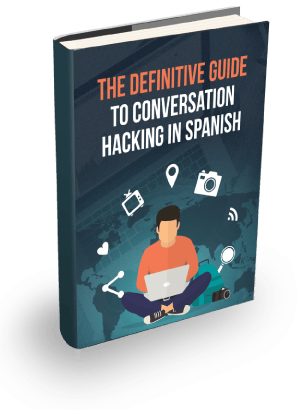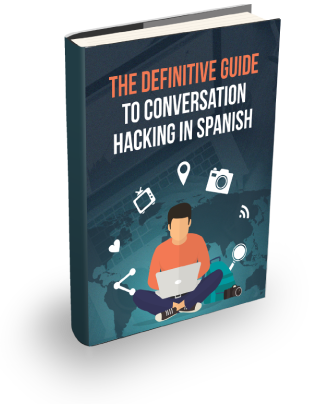Do you remember that time you hired a removalist and watched in horror as they tossed your fragile items around like a fisherman at the docks with a box of freshly caught fish?
Think back to the moment when you realised the people looking after your valuable items weren’t the right ones for the job, and how this contributed to a sudden sense of panic.
At the time of writing this post, the world is watching on as Donald Trump rises in popularity for the race to the US presidency. Every day I see posts in my Facebook newsfeed from worried American friends about the potential fate of their country, and the rest of the world if Trump were to be elected.
I don’t know if Trump is the right person to lead the most powerful nation on earth. But, I do know that amongst a certain group of people the prospect is terrifying.
The problem is, like the removalist, Trump hasn’t yet provided sufficient evidence to suggest he is the man for the job. And this lack of evidence is what is contributing most to a rising level of anxiety.
Whenever you deal with a person or organisation you think is unskilled, and that lack of skill directly affects your wellbeing, you are likely to feel anxious.
And along with this particular feeling of anxiety, you’ll find it incredibly difficult to simply sit still and watch on.
The reason I mentioned the examples of Trump and the removalist is this: when you are practicing your Spanish, you need to avoid a situation where you bring about an anxiety in the person you are speaking with. The kind of anxiety that makes it difficult for them to sit still and watch on. You want to make them fell like they don’t have to answer the question for you, change languages back to English, or—at worst—run away.
If you want to avoid this situation, you need to put the other person at ease. You can do this by sending subtle messages that you are okay, and you know what to do next.
Even if you aren’t confident with your Spanish, you can send a message that says you are. And the best place to start doing this is with your approach to handling awkward silences.
Why this approach is so important
Social interactions are awkward enough as they are.
When you have a choice to socialise with someone who speaks your language, or elect a man to run your country, you want to choose someone who you think can do so.
I have noticed, as my Spanish level has grown over the years, how I have turned from a person that some Spanish natives don’t really want to talk to, to someone they look forward to speaking with.
I remember having one of the best one-on-one conversations I had ever had in Spanish with a lovely guy from Madrid. Or, at least I thought it was one of the best. Two days after the conversation he blocked me on Skype.
He could have blocked me for any number of reasons but I believe the main reason was because my Spanish back then was so broken that it was difficult to have a conversation with me.
More recently, I have watched other beginners try to speak Spanish with natives. I looked carefully at the faces and body language of the Spanish natives they are speaking with. What the body language of the natives showing, despite how friendly or patient they were, was a desire to be elsewhere.
Now, I didn’t bring this up to discourage you. I believe the most important thing you can do to improve your Spanish quickly is to make tons and tons of mistakes practicing your Spanish.
But what I am saying is that if you want to be successful you need to lower the chances of a flight or fight response so that you can have more opportunities to practice and improve.
Definition of awkward silence
For this post, I’m going to define two subsets of awkward silences.
The first kind of awkward silence is the one you are most familiar with. This is where two people are talking and they run out of things to say. This could be due to the conversation running out of momentum. Or, someone saying something that leads the other lost with any idea of what to say next, and desperately searching for a way to change the subject.
The other kind of awkward silence is less common when natives are chatting amongst themselves. But is super common when people are speaking in second, third or fourth languages.
This second kind of awkward silence comes, not from having zero to say, quite the opposite, this silence comes from having lots to say but not knowing how to say it due to lack of vocabulary, or to taking the necessary thinking time required find the right turn of phrase.
How to fill an awkward silence
For a long time, your Spanish will be less than perfect. In fact, it will probably always be less than perfect.
You will make mistakes whenever you try to speak—but this is a good thing—you need to make as many mistakes as you can.
What you want to avoid is looking like you are drowning and in desperate need of help. Instead you want to let the other person know that you are okay, all you are doing is simply thinking about your response.
I’ll demonstrate what I’m talking about through a simple example:
Imagine someone asks you:
English: What do you think of Donald Trump?
Español: ¿Qué opinas de Donald Trump?
You may have a number of things to say on the topic in English. But in Spanish you may think to yourself: ‘how can possibly express all my specific thoughts about the current political situation?’
What you do next is important.
You want to avoid responding like this:
Español: ….fh………..k………..um…..l…………….p………….
Or, just gesturing with your hands a lot to try and get a point across using body movements.
Instead, to put the other person at ease, fill the silence with Spanish pause words (muletas):
English: Well…
Español: Pues…
English: Well…
Español: Bueno…
English: It’s a good question…
Español: Es una buena pregunta…
English: It’s that…
Español: Es que…
English: I think that…
Español: Creo que…
English: I think that…
Español: Pienso que…
English: What I want to say is on the tip of my tongue…
Español: Lo que quiero decir está en la punta de la lengua…
You could say any combination of one, two, or all of these phrases as you think about your answer.
After throwing a few of these phrases out there, you will have bought yourself time that you can use to consider how to translate certain phrases, or even think back to a moment that defined your whole view on the issue.
But more importantly, the critical thing that this stall tactic has done is fill the other person with confidence that you aren’t under high levels of stress.
Summary
Navigating social situations aren’t easy.
The first thing you always want to do is let the other person know that you are comfortable so they can feel comfortable.
Help the person you are speaking with by sending them signals that you aren’t drowning. Send them the message that you just need a little time to think. The best way to do this is by confidently using a combination of Spanish pause works.
How else can you fill an awkward silence and help the person you are speaking with feel more comfortable?




1. Entonces is not a bad filler word at all.
2. Dejame ver/pensar
3. “O sea” is the best to navigate your way into clarifying something… because hard part for me is hearing heavy accents low/fast talkers…and/or regional words
to clarify i just say …. o sea … and follow it up with my understanding…
“In other words, i mean, so you’re saying, to rephrase, do you mean”
4. Vale… vale… muy bien…
5. Eso quiere decir…? Also useful to have someone clarify
6. Pues…. hombre …En ese caso….
Hola Mustafa, yes these are all good suggestions.
“Entonces” is a joining word, so you need to be careful using this in all contexts.
E.g. if some asks you “¿Cuántos años tienes?”, you can say “pues…” but not “entonces…”.
“O sea” is best for rewording what you have said. So if you say something and someone doesn’t quite understand what you have said, then you can clarify with “o sea…”.
I just realized by reading your article that filler words sometimes serve the function of letting the other person know that you have understood his/her question and are thinking about the answer. Thanks for the article, Andrew.
Yes, that’s right Ariane!! It’s a really useful skill to help make the person you are speaking with feel comfortable that you have understood them.